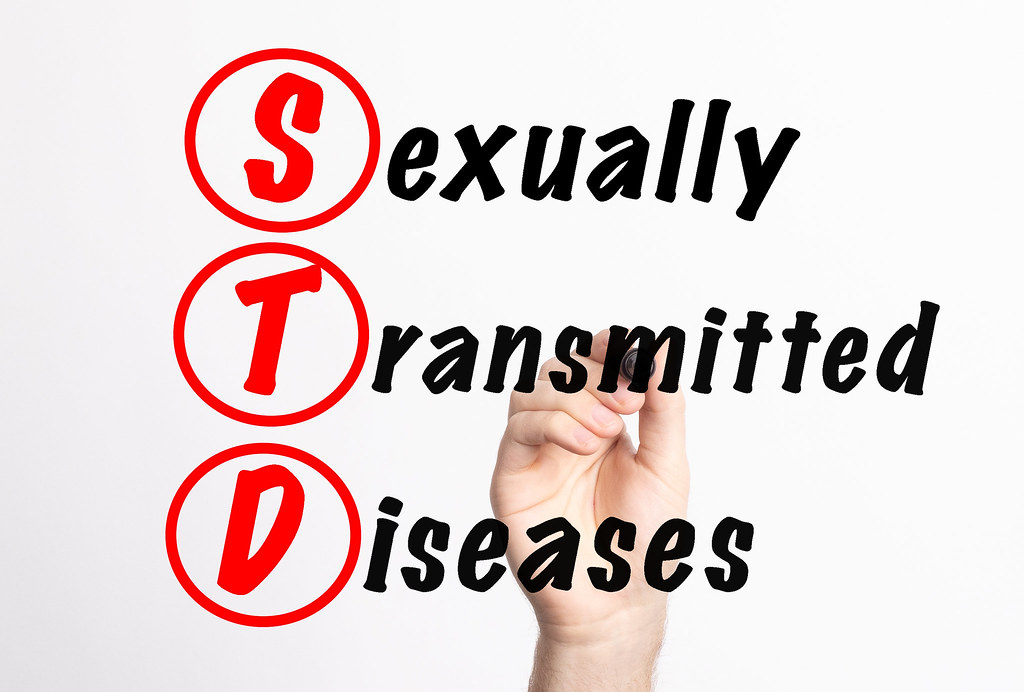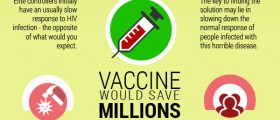Venereal disease is any disease or infection that is contracted through sexual contact. These diseases can caused by infection with certain microorganisms. Some venereal diseases are localized, but others can impact different body organs or be systemic in nature. The whole body can be affected and number of complications may occur. These diseases are also known as sexually transmitted diseases (STDs) or sexually transmitted infections (STIs).
Venereal diseases are spread through an exchange of body fluids such as semen, vaginal secretions or blood with an infected person. People who are have an active sex life and often change partners are at the highest risk of developing any of venereal diseases, especially if condoms are not used. There are a number of sexually transmitted diseases, each with its on specific symptoms. However, there are several common symptoms that come into play with almost all venereal diseases.
Photo by Jernej Furman via FlickrSymptoms of Venereal Diseases
Unusual discharge from the genitals is the most common symptom of a sexually transmitted disease. Although you should pay attention to any change, this discharge is often characterized by its thickness and foul smell. The discharge may also be yellow or green.
Another common symptom of venereal disease is pain that can be experienced in different parts of the body. Many STDs cause an affected person to suffer from a burning pain when urinating, abdominal pain, or constant vague pelvic pain. Sexual intercourse may become painful as well. Skin rash and sores in the genital area typically indicate venereal disease, although it is important to note that ingrown pubic hairs are commonly mistaken for STDs too.
However, skin on other parts of the body can be affected by venereal diseases as well. Sores may sometimes appear and disappear. Fever also usually accompanies sexually transmitted diseases just as a large number of other medical conditions.
- Nationally, 12.7% of sexually experienced adolescents and young adults who were on a parent’s health insurance plan would not seek sexual and reproductive health care because of concerns that their parents might find out.
- During 2013–2015, overall, 12.7% of sexually experienced persons aged 15–17 years and aged 18–25 years who were covered by a parent’s insurance plan (13.5% of females and 12.0% of males) reported that they would not seek sexual and reproductive health care because of concerns that their parents might find out.
- A significantly higher percentage of youths aged 15–17 years (22.6%) said they would not seek sexual and reproductive health services for this reason than did those aged 20–22 years (8.2%) and 23–25 years (5.4%.)
- Regarding receipt of STD services, persons aged 15–17 years who had time alone with a health care provider in the past 12 months reported significantly higher prevalences of receiving a sexual risk assessment (71.1%) than did those who did not have time alone with a provider (36.6%).
- Youths without health insurance reported the lowest prevalence of receiving a sexual risk assessment (38.2%), but the highest prevalence of receiving STD treatment (9.7%), compared with youths in other insurance categories.
Common Venereal Diseases
HIV/AIDS
Acquired immunodeficiency syndrome (AIDS) is a lethal venereal disease caused by the human immunodeficiency virus (HIV). HIV can be acquired through sexual contact, use of infected needles, or blood transfusion. HIV/AIDS damages the immune system leading to susceptibility to different infections and health problems.
Initially, HIV/AIDS is followed by flu-like symptoms such as fever and chills, cough, fatigue and sore throat. Lymph nodes in the neck, armpits and groin typically become swollen. An infected person suffers from diarrhea and gradually loses weight. HIV is still potentially deadly, once AIDS is developed. However, with timely diagnosis, it can be managed successfully as a chronic disease. This is why it is important to get tested for HIV even if you are scared.
Chlamydia
Chlamydia is a bacterial infection, which is usually diagnosed in advanced stages because it doesn’t initially cause symptoms. Common symptoms of this venereal disease are painful urination, white and thick vaginal discharge, clear and watery discharge from the penis, testicular pain and pain during sexual intercourse. Chlamydia is treated with antibiotics.
Genital Herpes
Genital herpes is caused by herpes simplex virus (HSV). It is also called herpes genitals. This venereal disease is accompanied by itching, sores and pain in the genital area. The throat can be affected by the disease too. Blisters on the skin, pain while urinating, vaginal discharge, fever and swollen lymph node in the groin are other symptoms of genital herpes.
Genital herpes is characterized by outbreaks, meaning the sores will subside and then come back when your immune system is weakened. As with cold sores, the virus remains dormant in the body.
Gonorrhea
Gonorrhea is a sexually transmitted infection caused by bacteria. Gonorrhea affects the urethra, rectum, cervix, anus and throat, and may impair fertility, in women after it progresses to pelvic inflammatory disease because it was left untreated.
The symptoms of the disease are genital discharge, abdominal pain, burning pain while urinating, vaginal discharge with blood and anal itching. Pain in testicles is common in man.
Remember — anyone who is sexually active can potentially acquire a sexually transmitted disease; even if you are monogamous, your partner might not be, and condoms do not prevent all genital contact so herpes can still be transmitted in certain cases. Getting an STD test once in a while is good practice for anyone.

















_f_280x120.jpg)
Your thoughts on this
Loading...